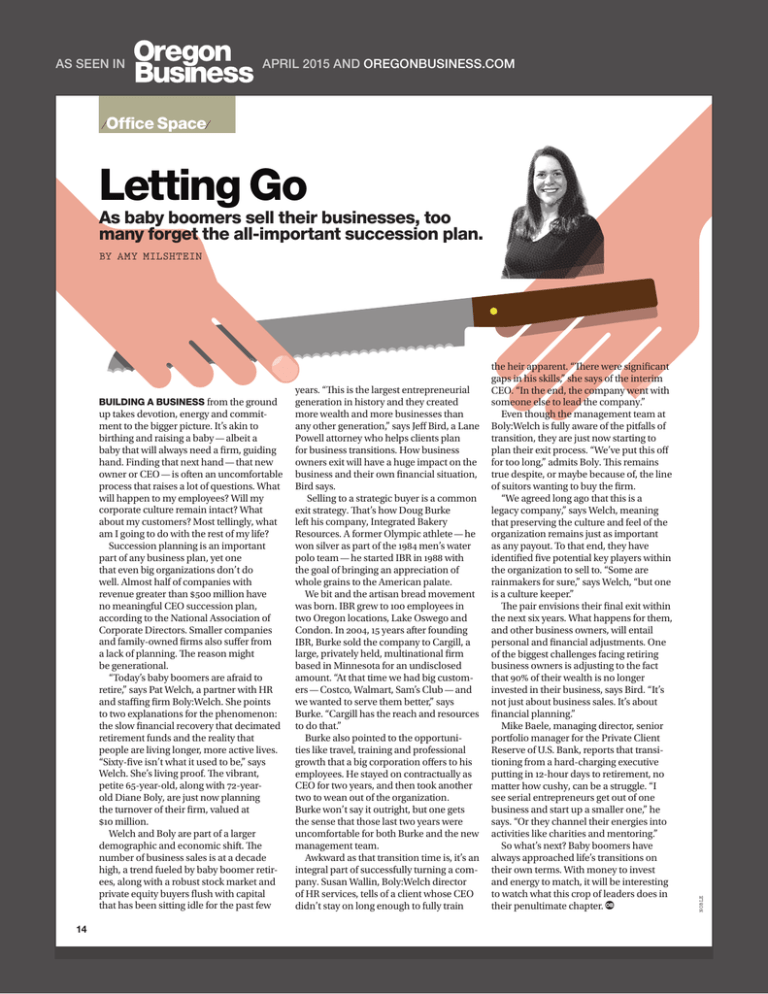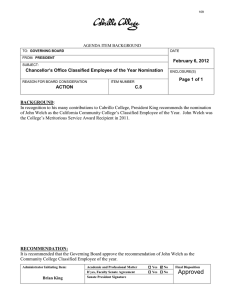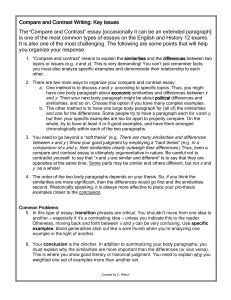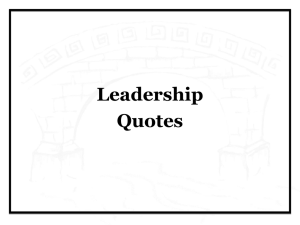Document 13217039
advertisement

AS SEEN IN APRIL 2015 AND OREGONBUSINESS.COM ⁄ office space⁄ Letting Go as baby boomers sell their businesses, too many forget the all-important succession plan. © 2015 Pacific Power up takes devotion, energy and commitment to the bigger picture. It’s akin to birthing and raising a baby — albeit a baby that will always need a firm, guiding hand. Finding that next hand — that new owner or CEO — is often an uncomfortable process that raises a lot of questions. What will happen to my employees? Will my corporate culture remain intact? What about my customers? Most tellingly, what am I going to do with the rest of my life? Succession planning is an important part of any business plan, yet one that even big organizations don’t do well. Almost half of companies with revenue greater than $500 million have no meaningful CEO succession plan, according to the National Association of Corporate Directors. Smaller companies and family-owned firms also suffer from a lack of planning. The reason might be generational. “Today’s baby boomers are afraid to retire,” says Pat Welch, a partner with HR and staffing firm Boly:Welch. She points to two explanations for the phenomenon: the slow financial recovery that decimated retirement funds and the reality that people are living longer, more active lives. “Sixty-five isn’t what it used to be,” says Welch. She’s living proof. The vibrant, petite 65-year-old, along with 72-yearold Diane Boly, are just now planning the turnover of their firm, valued at $10 million. Welch and Boly are part of a larger demographic and economic shift. The number of business sales is at a decade high, a trend fueled by baby boomer retirees, along with a robust stock market and private equity buyers flush with capital that has been sitting idle for the past few years. “This is the largest entrepreneurial generation in history and they created more wealth and more businesses than any other generation,” says Jeff Bird, a Lane Powell attorney who helps clients plan for business transitions. How business owners exit will have a huge impact on the business and their own financial situation, Bird says. Selling to a strategic buyer is a common exit strategy. That’s how Doug Burke left his company, Integrated Bakery Resources. A former Olympic athlete — he won silver as part of the 1984 men’s water polo team — he started IBR in 1988 with the goal of bringing an appreciation of whole grains to the American palate. We bit and the artisan bread movement was born. IBR grew to 100 employees in two Oregon locations, Lake Oswego and Condon. In 2004, 15 years after founding IBR, Burke sold the company to Cargill, a large, privately held, multinational firm based in Minnesota for an undisclosed amount. “At that time we had big customers — Costco, Walmart, Sam’s Club — and we wanted to serve them better,” says Burke. “Cargill has the reach and resources to do that.” Burke also pointed to the opportunities like travel, training and professional growth that a big corporation offers to his employees. He stayed on contractually as CEO for two years, and then took another two to wean out of the organization. Burke won’t say it outright, but one gets the sense that those last two years were uncomfortable for both Burke and the new management team. Awkward as that transition time is, it’s an integral part of successfully turning a company. Susan Wallin, Boly:Welch director of HR services, tells of a client whose CEO didn’t stay on long enough to fully train NOBLE BUiLdiNG a BUsiNess from the ground the heir apparent. “There were significant gaps in his skills,” she says of the interim CEO. “In the end, the company went with someone else to lead the company.” Even though the management team at Boly:Welch is fully aware of the pitfalls of transition, they are just now starting to plan their exit process. “We’ve put this off for too long,” admits Boly. This remains true despite, or maybe because of, the line of suitors wanting to buy the firm. “We agreed long ago that this is a legacy company,” says Welch, meaning that preserving the culture and feel of the organization remains just as important as any payout. To that end, they have identified five potential key players within the organization to sell to. “Some are rainmakers for sure,” says Welch, “but one is a culture keeper.” The pair envisions their final exit within the next six years. What happens for them, and other business owners, will entail personal and financial adjustments. One of the biggest challenges facing retiring business owners is adjusting to the fact that 90% of their wealth is no longer invested in their business, says Bird. “It’s not just about business sales. It’s about financial planning.” Mike Baele, managing director, senior portfolio manager for the Private Client Reserve of U.S. Bank, reports that transitioning from a hard-charging executive putting in 12-hour days to retirement, no matter how cushy, can be a struggle. “I see serial entrepreneurs get out of one business and start up a smaller one,” he says. “Or they channel their energies into activities like charities and mentoring.” So what’s next? Baby boomers have always approached life’s transitions on their own terms. With money to invest and energy to match, it will be interesting to watch what this crop of leaders does in their penultimate chapter. wattsmart is registered in U.S. Patent and Trademark Office. BY AMY MiLShTEiN 14 05 FOB.indd 14 3/26/15 12:46 PM 9818-2_PP_SB





